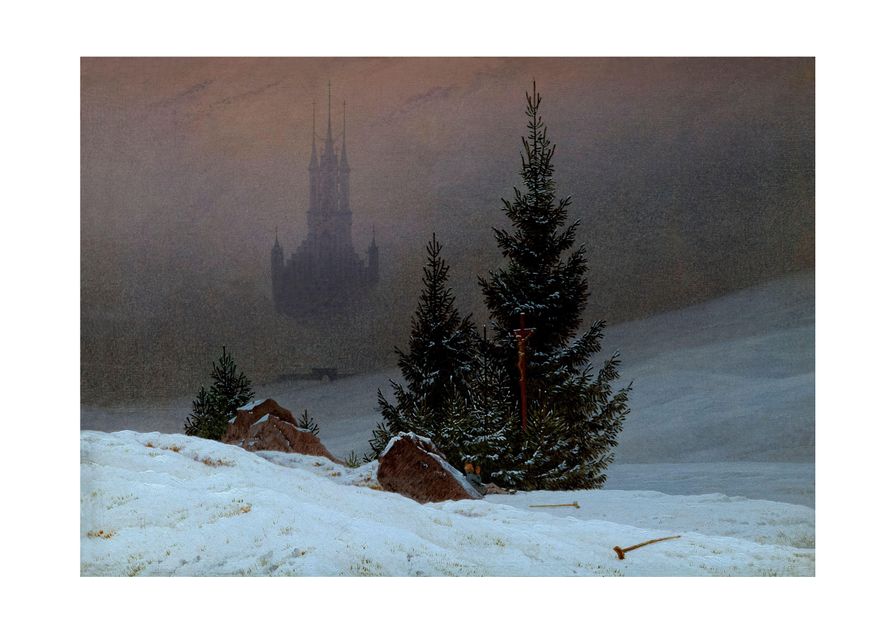Trying to navigate the history of art—its artists, its ideas, its interpretations and interrelations, its foundations and attitudes—can be inspiring yet also intimidating. (Cue image of an Ancient Grecian goddess made of marble, back-of-hand placed melodramatically on forehead, eyes glancing despondently towards the heavens for mercy.) Sometimes I like to ditch the systematic navigation of art according to map-defined time periods or artistic movements and instead go off-piste, wafting through the galleries on impulse alone. It was on one of these liberating, follow-my-nose trips around the National Gallery in London that I stumbled, serendipitously, upon Winter Landscape (1811) by Caspar David Friedrich.
Friedrich, who was born 250 years ago this coming May, is nowadays synonymous with German romanticism. Perhaps that’s because he so perfectly illustrated all of the genre’s classic tropes: the awesome, fatalistic beauty of nature; the subjectivity of the human experience (as also elicited by nature); introspection; sentiment over cold reason; and the individual artist as a creative free spirit or eccentric with boundless talent.
Though it is important to note that Friedrich’s Winter Landscape, at least compared to the other paintings displayed in the same room, is not as grand or imposing as these themes suggest—rather it is dignified, mysterious. It is deeply intimate and devotional, both in its explicitly pious theme and captivatingly ominous atmosphere. (German romanticism was particularly known for its religious slant, influenced as it was by the Lutheran emphasis on perceiving the power of God through nature.)
In the background of the painting is an ethereal gothic cathedral, looming over an injured man collapsed in the foreground. This anonymous and downbeat figure is insignificant relative to the profound beauty of the nature surrounding him. He is sheltered by three winter-resilient fir trees, representing the Holy Trinity. Alone in this barren scene, there is no hint as to the origins of this man’s desperate circumstance. With his crutches abandoned in the snow, he worships a crucifix, submitting to death, nature and his faith in God.
Personally, I prefer to forget about the spiritualism of this messaging in favour of a more general allegory about submission to, and trust in, rebirth and renewal. Change, as an aspect of nature, is inescapable. And it is through this aspect that we might find—as we do in all of Friedrich’s portrayals of nature—what we call the sublime.
And that’s why I see this painting’s top note as one of hope; that after winter, no matter how bleak, there will inevitably follow spring—as hinted by the tiny but vibrant jewels of grass piercing through the snow. Having taken until now to fully recover from a particularly gluttonous Christmas of satisfying every impulse for chocolate and cured meats—and only occasionally deviating from horizontal TV watching (am I projecting?)—I feel reassured. Now’s the time to recover your summer body, Friedrich tells me. Now’s the time to learn how to effectively manage your crippling addiction to Instagram reels and subsequently go to bed at a reasonable hour (again, am I projecting?). The year is now in full swing: here’s to good faith, optimism and evolution. Romanticise your life!














